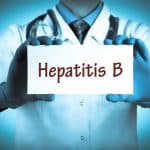An Overview of the HCV Drug Development Process
Keeping current on the potential arrival of new, improved Hepatitis C drugs is a regular research venture for many who are living with the Hepatitis C virus (HCV). Because the current standard of care for HCV works for less than 50 percent of those infected, doctors, scientists and pharmaceutical companies are feverishly searching for a solution that is more effective and has fewer side effects than interferon combination therapy. However, keeping up with the seemingly endless announcements of discoveries and successes demands a layman’s road map for deciphering what it all means.
The testing of new drugs is a long process that typically takes about 12 years from pre-clinical testing, through clinical trials, to U.S. Food and Drug Association (FDA) approval until it can finally reach the general public.
Pre-Clinical
Drug companies continuously analyze thousands of compounds, seeking ones of therapeutic value. During the average six to seven years of pre-clinical testing, the manufacturer completes synthesis and purification of the drug and conducts limited animal testing. Under FDA requirements, a drug company must first submit data showing that their drug is reasonably safe before it can be evaluated by humans in initial, small-scale clinical studies.
Only after proving its safety and efficacy in vitro (in a test tube) or in laboratory animal testing can a drug be administered to humans in clinical trials. During pre-clinical drug development, the following is evaluated:
- Toxicity
- Pharmacologic effects
- Genotoxicity – genotoxic substances cause cancer, through genetic mutation or contribution to tumor development
- Absorption and metabolism
- Speed of excretion
If any evidence surfaces that it is unsafe or ineffective, the drug will likely never make it to human testing. Actually, only about 1 in 1,000 investigational compounds survives pre-clinical testing favorably and proceeds to clinical studies. Of those drugs that make it to human testing, approximately 1 in 5 will persevere through the many steps and receive FDA marketing approval. Therefore, a person living with HCV who hopes to find a new medicine may be disappointed if he/she gets too excited about drugs in the pre-clinical testing phase.
When a company is ready to proceed to clinical trials, it files an investigational new drug application with the FDA. Most clinical trials are designated as Phases I, II or III, and sometimes IV based on the type of questions that the study is seeking to answer. Although the phases of human clinical studies are generally conducted sequentially, there are cases when the phases overlap.
Clinical Trial: Phase I
Once granted approval by the FDA as an investigational new drug, testing can begin on humans. Phase I studies are typically conducted in healthy volunteer subjects, with the intent of determining:
- Metabolic and pharmacologic actions
- Side effects with increasing doses
- If possible, early insight into drug effectiveness
Typically considered to be smaller trials, Phase 1 studies generally recruit between 20 to 80 human subjects. Typically the drug remains in Phase I for one to two years.
Clinical Trial: Phase II
Instead of recruiting solely healthy people, Phase II clinical trials begin to evaluate the drug’s effectiveness in the target population. This stage of testing is where the preliminary data on a potential drug’s effectiveness for HCV emerges. Additionally, Phase II helps determine the common short-term side effects and risks associated with the drug. Several hundred people are usually enrolled in a Phase II clinical study. At the end of this round of studies, the manufacturer meets with FDA officials to discuss the development process, continued human testing, any concerns the FDA may have and the protocols for Phase III.
Clinical Trial: Phase III
Usually the most extensive and expensive part of drug development, Phase III studies are intended to evaluate the overall benefit-risk relationship of the drug. By gathering additional information about the drug’s effectiveness, safety, side effects and comparison to commonly used treatments, Phase III studies involve large groups of participants. Usually tested on several thousand people, Phase III studies also provide the basis for extrapolating results for physician labeling should the drug be granted FDA approval.
Once Phase III is complete, the manufacturer may file a new drug application. Review of the new drug application typically lasts one to two years, bringing drug development time after pre-clinical trials to approximately nine years. If the FDA approves the new drug, it may be marketed with FDA regulated labeling. The FDA also gathers safety information as the drug is used and adverse events are reported, and it will occasionally request changes in a labeling or will submit press releases as new contraindications arise. If adverse events appear to be systematic and serious, the FDA may withdraw a product from the market at any time.
Clinical Trial: Phase IV
In Phase IV studies, the drug is already on the market for a particular indication, but is now being tested for a different indication, use or disease.
Fast Track Status
During the phases of investigational drug development, the manufacturer can obtain accelerated development or review of its drug. If granted fast track status by the FDA, the timelines for clinical trials can take some shortcuts. Geared towards facilitating the development and expedition of new drugs that have the potential to address an unmet medical need for serious or life-threatening conditions, many HCV potential drugs are granted fast track status.
Once a drug receives fast track designation, early and frequent communication between the FDA and a drug company is encouraged throughout the entire drug development and review process. The frequency of communication assures that questions and issues are resolved quickly, often leading to earlier drug approval and access by patients.
Having a general concept of the many steps and length of time involved in the approval of a new medication gives us a greater appreciation of what it takes to develop a drug. Patience is definitely required to see a potential cure come to fruition. While it may be premature to place all of your hope in a compound with promising pre-clinical trial results, go ahead and visualize how a drug emerging positively from Phase III will help you defeat HCV.
References:
http://en.wikipedia.org, Genotoxicity, Wikimedia Foundation, Inc., 2007.
www.fda.gov, Frequently Asked Questions on Drug Development and Investigational New Drug Applications, US Food and Drug Administration, 2007.
www.fdareview.org, The Drug Development and Approval Process, The Independent Institute, 2007.
www.hcvadvocate.org, Hepatitis C Treatments in Current Clinical Development, Alan Franciscus, Hepatitis C Support Project, October 2007.







